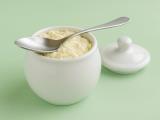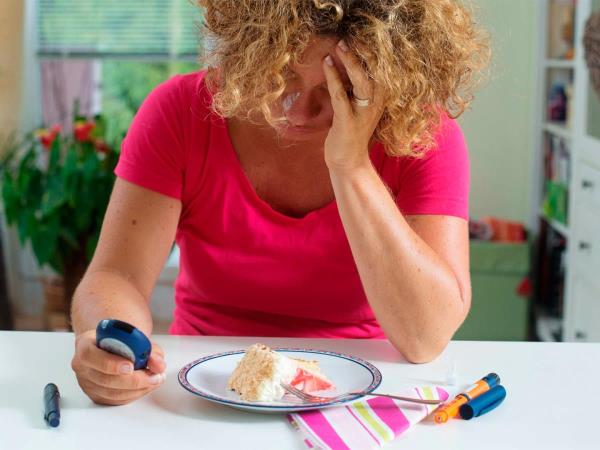The number of people who are not even aware of the disease is around 40% or more, which means that most do not take action until serious problems arise. But often, by that time, it is already too late.
Unfortunately, stress plays a big role in controlling blood sugar. When under stress, the body releases cortisol, which raises blood sugar levels. The foundation lies in an unhealthy lifestyle: too many carbohydrates, lack of exercise, excess weight, and also prolonged stress.
Type 2 Diabetes - The Silent Destroyer
Diabetes is a slow and insidious disease. While the initial symptoms are almost impossible to notice, harmful processes are already taking place behind the scenes, often starting years before we notice them. The body develops a condition known as insulin resistance, where cells no longer respond to insulin, leading to elevated blood glucose levels.
Type 2 diabetes accounts for over 90% of all cases. This means that 9 out of 10 diabetics suffer from this form. The complications can be fatal: heart attack, stroke, kidney damage, blindness, amputations... Poor glycemic control slowly destroys the entire body.
We must not forget obesity, especially abdominal fat, which is also one of the biggest enemies of modern times. Every kilogram releases a derivative of the hormone adiponectin, which impairs insulin sensitivity. Furthermore, modern diets contain a lot of refined sugars and high-glycemic carbohydrates, which rapidly raise blood sugar levels.
From a pharmaceutical perspective, there are pills, injections, primarily insulin, and newer tablets called GLP-1 receptor agonists. GLP-1 in particular acts to regulate appetite and stimulate insulin, making it excellent for type 2 diabetes and has become very popular in recent years. However, it still holds true that the best medicine is a healthy lifestyle, primarily focused on diet and regular exercise.
Type 1 Diabetes - The Sudden Strike
This form appears almost like in a fairy tale - everything changes overnight. The immune system incorrectly identifies beta cells, which produce insulin, as hostile and destroys them. The body no longer has its own insulin, leading to severe hyperglycemia. This is most commonly found in children and young people, often already in the hospital.
Treatment begins with intensive insulin therapy, changing the diet, and educating about the disease. In recent years, progress has been made with installations such as insulin pumps, which deliver insulin to the body. The results? People with type 1 diabetes today are able to live almost like healthy individuals and even compete at the highest levels...
Type 1 diabetes is significantly rarer than type 2 but still has a strong impact on public health, as it is increasingly appearing in young people who need lifelong medication and monitoring.
Gestational Diabetes (Type 3) - Sugar during Pregnancy
Diabetes can also develop during pregnancy. It is called gestational diabetes and is a result of insulin resistance - the same as in type 2. Therefore, the mother's body becomes less sensitive to insulin as a result of pregnancy hormones. Studies show that gestational diabetes affects between 3 and 9% of pregnant women worldwide, but data from the World Health Organization (WHO) and other research shows even 15 - 25% in certain populations. In countries with higher obesity rates, the numbers are significantly higher.
For most affected individuals, careful food choices and regular exercise are sufficient. Some pregnant women may need metformin or even insulin. Research confirms that metformin is a safe choice during pregnancy, often even comparable to insulin, reducing the risk of preeclampsia. Up to 90% of gestational diabetes disappears after childbirth, but mothers still have up to 7 times higher risk of developing type 2 diabetes later on.
Folk remedies during pregnancy have always advised: plenty of natural fluids, less sugar, and regular exercise (slow, not excessive). This strengthens the body and reduces the risk of developing any disease...
Impact of Stress - The Silent Enemy
Stress triggers the hormone cortisol, which raises blood sugar levels and slows insulin function. Prolonged stress can even lead to Cushing's syndrome, where cortisol levels are chronically elevated, and diabetes becomes a consequence.
In patients with diabetes, stress is a common catalyst for diabetes burnout - these patients start neglecting self-control. They take fewer medications, skip exercise, and stray from their usual routines. The result? Unreasonably rapid deterioration of blood sugar levels.
What Science Says?
Between 1990 and 2022, the global prevalence of diabetes in adults doubled - from about 7% to 14%. In 2022, there are already approximately 450 million adults with diabetes, expected to increase to 853 million by 2050. Gestational diabetes is recognized in Europe in 3 to 9% of pregnancies, and in the USA even in 15 to 25% of cases.
- Studies show that physical activity during pregnancy reduces the risk of gestational diabetes by 28%.
- Women with gestational diabetes have seven times higher risk of developing type 2 diabetes later on.
- Metformin in pregnancy reduces weight gain and the risk of preeclampsia, and children have less visceral fat.
Control and Prevention
Although diabetes in today's scope is a relatively recent occurrence, the disease has been known for a long time. Folk healers suggest:
- Dandelion root green teas - liver stimulant and sugar metabolism enhancer (their biochemical effects have a positive impact).
- Licorice root - people swear by its ability to reduce hunger and stabilize blood sugar, but caution is needed with high blood pressure.
- Cinnamon - numerous studies confirm that regular consumption of 1-2g of cinnamon per day can reduce blood glucose by up to 20%.
- Garlic and honey - a classic combined remedy used by the elderly, believed to boost the immune system and improve metabolism - supported by research on garlic's impact in lowering glucose by 10-15%.
Lasting improvement is only possible through a change in dietary habits and lifestyle:
- Dietary Changes
The diet should be rich in low glycemic carbohydrates (vegetables, legumes, whole grains, nuts) and high in fiber, protein, and healthy fats. Instead of bread, you can enjoy homemade buckwheat porridge with herbs, eggs, and seasonal vegetables... - Exercises and Physical Activity
It's not just about weight. When you move, the body uses glucose and reduces insulin resistance. Simple walking, cycling, swimming, or home exercises are most effective. It is important to exercise at least 30 minutes each day. Studies show that even moderate physical activity of at least 30 minutes daily reduces the risk of gestational diabetes by up to 28%. - Psychological Support and Stress Reduction
In moments of crisis, sage tea is an excellent stress-relieving drink. Morning breathing exercises, meditation, or a short walk before bedtime - all of these promote hormone balance and prevent high blood pressure and high sugar levels. - Comprehensive Approach
The diabetes pandemic is real and enduring. It affects hundreds of millions of people worldwide, but there is hope. With modern medicine - insulin, GLP-1 agonists, metformin, pumps, and with folk, proven methods (exercise, diet, teas, breathing exercises) we can achieve lasting glycemic control. The solution is only possible with a comprehensive approach...
Therefore, it is important to acknowledge the problem, raise awareness about the importance of daily habits, the role of stress, and the significance of lifestyle changes. Diabetes is already too widespread today to ignore. It is the biggest and most serious pandemic in human history. And it will only get worse.









 Would you like to be informed about news on the website?
Would you like to be informed about news on the website?

